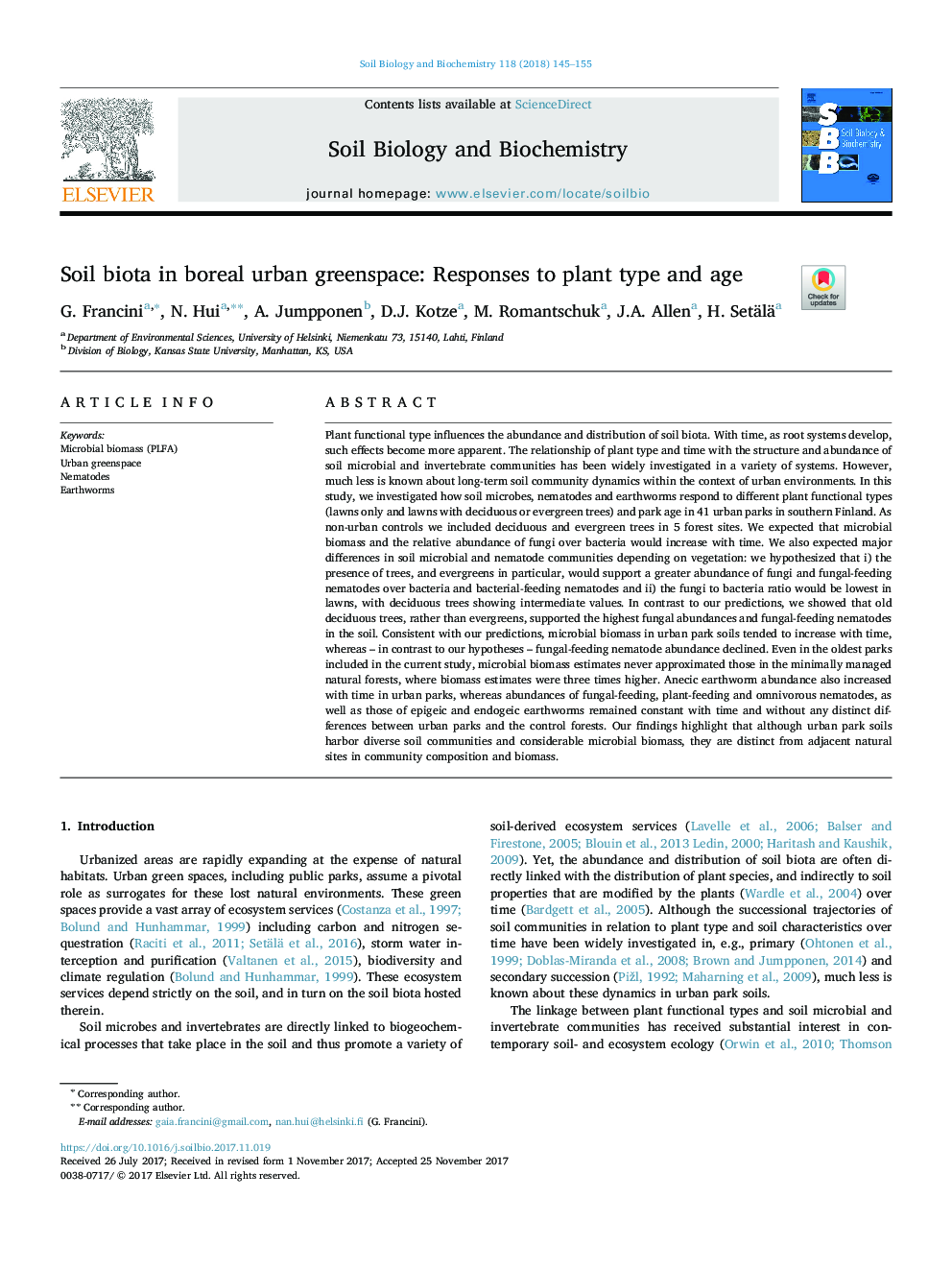| کد مقاله | کد نشریه | سال انتشار | مقاله انگلیسی | نسخه تمام متن |
|---|---|---|---|---|
| 8362998 | 1542566 | 2018 | 11 صفحه PDF | دانلود رایگان |
عنوان انگلیسی مقاله ISI
Soil biota in boreal urban greenspace: Responses to plant type and age
ترجمه فارسی عنوان
زیست توده خاک در فضای سبز شهری ساحلی: پاسخ به نوع گیاه و سن
دانلود مقاله + سفارش ترجمه
دانلود مقاله ISI انگلیسی
رایگان برای ایرانیان
موضوعات مرتبط
علوم زیستی و بیوفناوری
علوم کشاورزی و بیولوژیک
دانش خاک شناسی
چکیده انگلیسی
Plant functional type influences the abundance and distribution of soil biota. With time, as root systems develop, such effects become more apparent. The relationship of plant type and time with the structure and abundance of soil microbial and invertebrate communities has been widely investigated in a variety of systems. However, much less is known about long-term soil community dynamics within the context of urban environments. In this study, we investigated how soil microbes, nematodes and earthworms respond to different plant functional types (lawns only and lawns with deciduous or evergreen trees) and park age in 41 urban parks in southern Finland. As non-urban controls we included deciduous and evergreen trees in 5 forest sites. We expected that microbial biomass and the relative abundance of fungi over bacteria would increase with time. We also expected major differences in soil microbial and nematode communities depending on vegetation: we hypothesized that i) the presence of trees, and evergreens in particular, would support a greater abundance of fungi and fungal-feeding nematodes over bacteria and bacterial-feeding nematodes and ii) the fungi to bacteria ratio would be lowest in lawns, with deciduous trees showing intermediate values. In contrast to our predictions, we showed that old deciduous trees, rather than evergreens, supported the highest fungal abundances and fungal-feeding nematodes in the soil. Consistent with our predictions, microbial biomass in urban park soils tended to increase with time, whereas - in contrast to our hypotheses - fungal-feeding nematode abundance declined. Even in the oldest parks included in the current study, microbial biomass estimates never approximated those in the minimally managed natural forests, where biomass estimates were three times higher. Anecic earthworm abundance also increased with time in urban parks, whereas abundances of fungal-feeding, plant-feeding and omnivorous nematodes, as well as those of epigeic and endogeic earthworms remained constant with time and without any distinct differences between urban parks and the control forests. Our findings highlight that although urban park soils harbor diverse soil communities and considerable microbial biomass, they are distinct from adjacent natural sites in community composition and biomass.
ناشر
Database: Elsevier - ScienceDirect (ساینس دایرکت)
Journal: Soil Biology and Biochemistry - Volume 118, March 2018, Pages 145-155
Journal: Soil Biology and Biochemistry - Volume 118, March 2018, Pages 145-155
نویسندگان
G. Francini, N. Hui, A. Jumpponen, D.J. Kotze, M. Romantschuk, J.A. Allen, H. Setälä,
